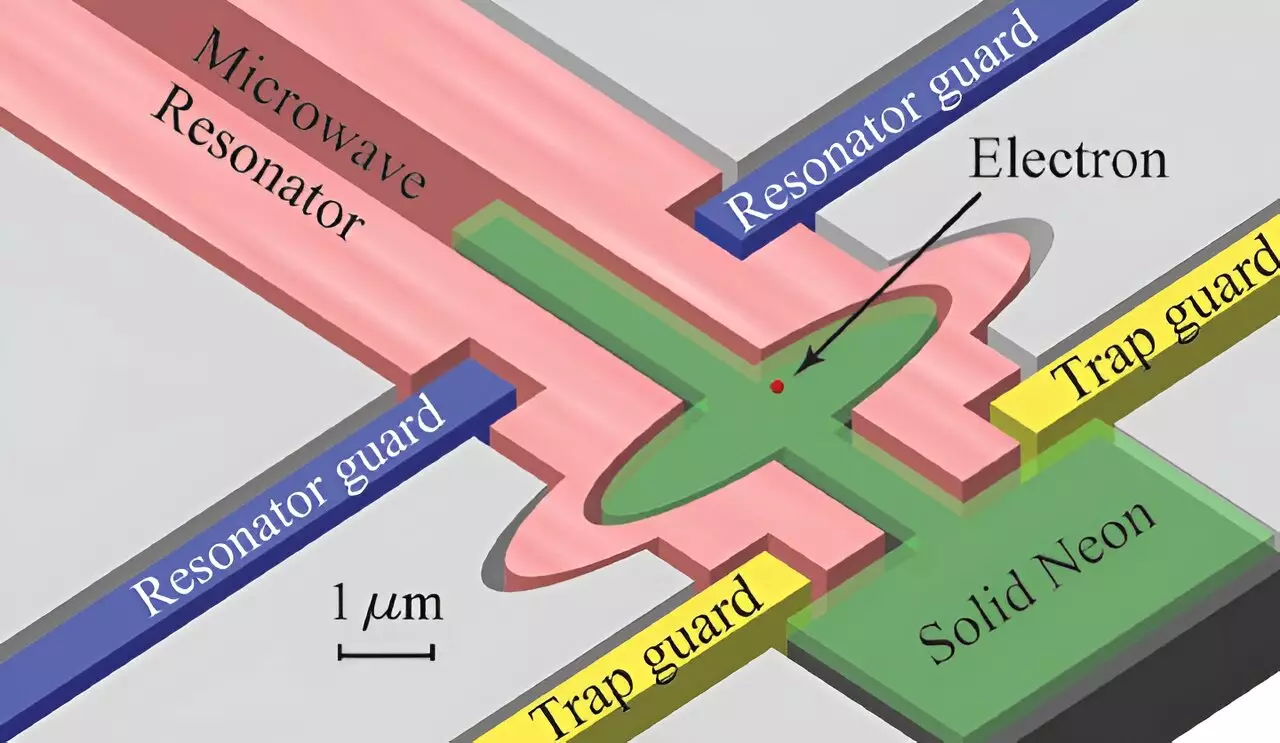Quantum computing is a rapidly advancing field that has the potential to revolutionize the way we approach complex calculations. One key element in developing an effective quantum computer is the creation of reliable quantum bits, or qubits, that can maintain coherence for extended periods of time. Recent research led by FAMU-FSU College of Engineering Professor Wei Guo has shed new light on the quantum state of electrons trapped on a solid neon surface, paving the way for significant advancements in quantum computing technology.
Guo’s team’s study revealed that small bumps on the solid neon surface naturally bind electrons, creating ring-shaped quantum states. These quantum states provide crucial information about the electron’s position, momentum, and other properties before they are measured. The alignment of the electron’s transition energy with microwave photons allows for controlled manipulation of the electron, essential for quantum computing tasks. This breakthrough significantly enhances our understanding of the electron-trapping mechanism on solid neon surfaces, offering valuable insights for the design and optimization of electron-on-solid-neon qubits.
Previous research by Guo and collaborators demonstrated the viability of solid-state single-electron qubits with coherence times up to 0.1 milliseconds, significantly longer than traditional semiconductor-based qubits. The extended coherence time of electron-on-solid-neon qubits can be attributed to the inertness and purity of solid neon, addressing issues associated with liquid surface vibrations in other qubit systems. These advancements in coherence time allow for prolonged superposition states, a defining characteristic of quantum computers that gives them their unique computational power.
One of the key challenges in optimizing electron-on-solid-neon qubits is the creation of a smooth surface with strategically placed bumps for electron trapping. Minimizing naturally occurring bumps that attract background electric charge while intentionally fabricating bumps of the right size within the qubit’s microwave resonator is crucial for efficient electron trapping. Guo emphasizes the importance of further research into the manufacturing process of neon qubits, highlighting the impact of injection temperatures and pressure on the final product. By gaining more control over the fabrication process, researchers can enhance precision and move closer to developing quantum computing systems capable of tackling previously insurmountable problems.
The research conducted by Wei Guo and his team represents a significant step forward in the field of quantum computing. By identifying the electron-trapping mechanism on solid neon surfaces and optimizing coherence times for electron-on-solid-neon qubits, researchers are on the path to unlocking the full potential of quantum computing technology. Continued exploration of neon qubit manufacturing processes and the impact of different conditions will be crucial in advancing the field and overcoming current computational limitations. As we delve deeper into the realm of quantum computing, the possibilities for groundbreaking discoveries and innovations are limitless.


Leave a Reply